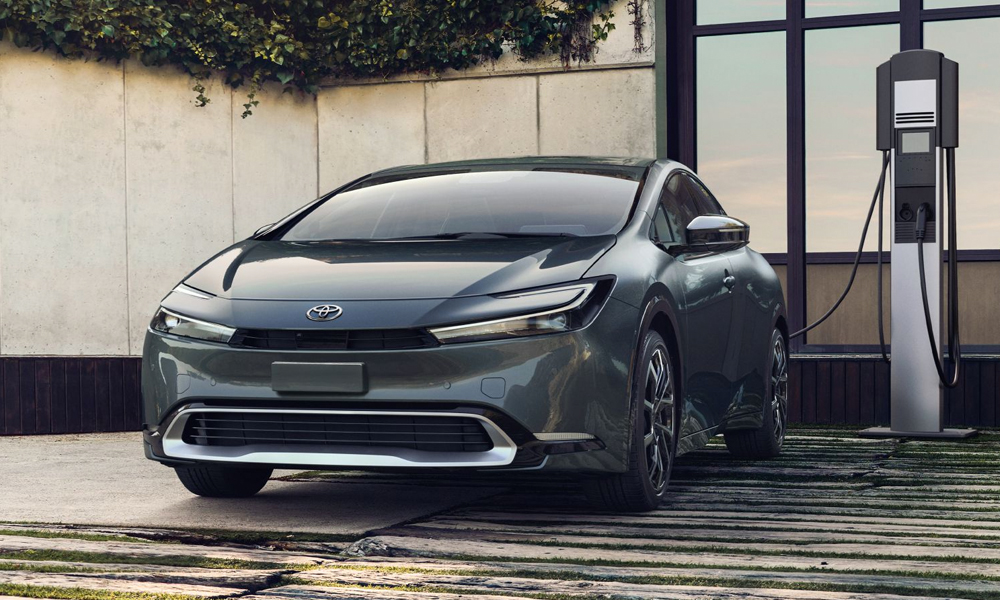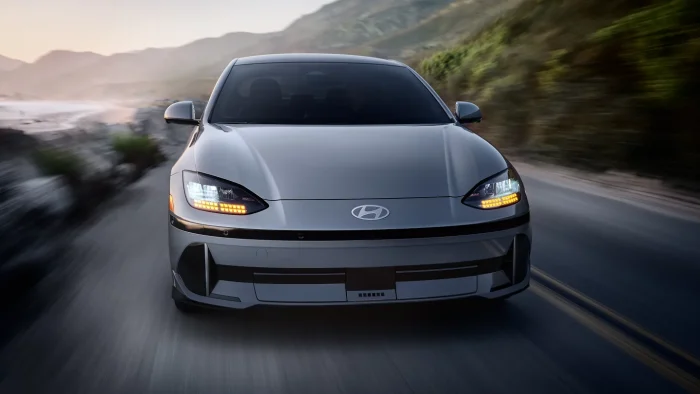When it was first introduced in 2000, the Prius wasn’t exactly a hit. But over the course of its first four generations, it became the best-selling hybrid passenger vehicle in history. Toyota has sold over five million of them globally, a shocking figure for what used to be a niche vehicle. The downside was the styling of the Prius. While one could argue that the first and second generation Priuses were conservative in their appearance, the third and fourth iterations of the Prius were hard to look at.
With more attractive and similarly efficient hybrid and electric vehicles hitting the market over the past several years, the Prius found it harder to justify itself and sales have waned. Annual Prius sales in the United States peaked at just over 235,000 in 2012 before dipping to a low of about 33,000 in 2022, according to automotive sales data.
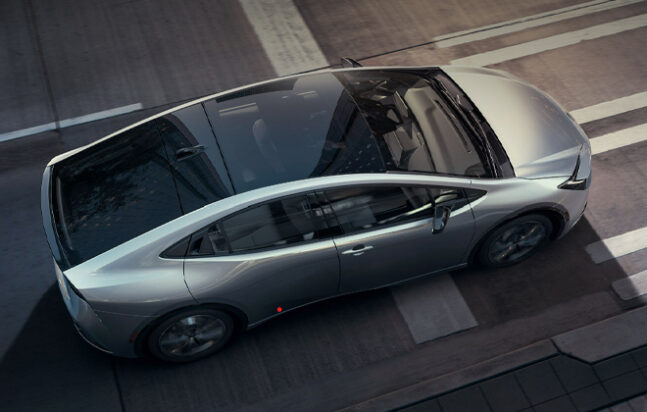
A quick look at the aesthetics compared to the more sleek hybrids out there today provides one easy answer as to why. Prius’s pinched front fascia and massive rear end made the car look like an ugly spacecraft out of a B-movie. The viewpoint of potential buyers who once wanted to look special and environmentally conscious shifted more toward a desire to actually have a car that looked attractive. Sure, you could spot it a mile away from behind, but from my experience, that was a signal to avoid it like the plague as drivers seemed more intent on getting the most miles per gallon with disregard for anyone who needed to be somewhere on time.
The Prius’s palpable weirdness wasn’t exclusive to the exterior. The cabin, though roomy, tried a bit too hard to be different with a Stormtrooper colorway, gauges in the center of the dash, a blue lollipop shift knob, and more piano black trim than, well, a piano.
In response to flaccid sales figures, Toyota did a mild refresh of the last Prius hybrid by borrowing elements from the Prius Prime PHEV, namely the taillights, which made it look only slightly less weird. Toyota also added an all-wheel drive option to make it more appealing for colder, wetter climates. Sadly, the efforts didn’t help sales much. The Prius also suffered from rather anemic driving dynamics. Not only was it floaty and numb, but the Prius AWD’s weak 121-hp engine “launched” it to 60 mph in about eleven seconds, a virtual eternity. It seemed that by the time you finally hit highway speeds, you were already at your destination. The Prius Prime was only slightly quicker, getting to 60 in 10.2 seconds. Regardless of which one you chose, the Prius was slow, unremarkable, and about as rewarding to drive as pedal car.
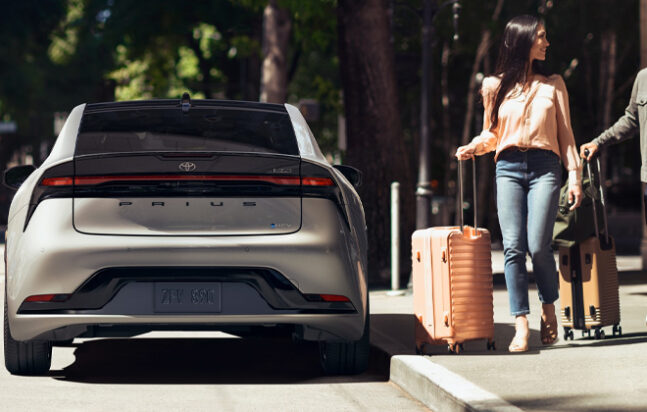
Then Toyota woke up. One look at the new Prius, and you’ll wonder if it’s actually a Prius. Not only does it look good, but it actually looks sporty. Gone is the weirdness, replaced by a sleek front end that borrows headlights from the Toyota Crown and Corolla. The windshield is steeply raked, and the body of the new Prius is now wider and lower than the previous car’s. Frankly, it’s the first time I’ve not wanted to cut eyeholes in a paper bag and wear it behind the wheel of one. You could even call it sexy. What in the hell has Toyota done?
The Details:
- Model: 2024 Toyota Prius Prime XSE Premium
- Price: $39,170 base MSRP | $41,495 as tested (includes $1,095 destination charge)
- 2.0-liter 4-cylinder gas engine, 150 hp, 139 lb-ft of torque + 2 AC motors
- 220 horspower combined output
- 10.9-kWh lithium-ion battery pack
- 39 miles of all-electric range
- Continuously variable automatic transmission
- Key Standard Features: Toyota Safety Sense 3.0 w/ Pre-Collision, Safe Exit Assist, Cross-Traffic Alert, Front Cross-Traffic Alert, Lane Change Assist, Traffic Jam Assist, Front & Rear Parking Assist w/ Automatic Braking, LED headlights and Daytime Running Lights, 12.3″ Infotainment Screen, Wireless Apple CarPlay/Android Atuo, Power Liftback, heated and ventilated front seats, heated steering wheel, Qi Wireless Smartphone Charger.
- Options on our tester: Digital Rearview Mirror ($200), Solar charging Roof ($610), Advanced Tech Package ($1,085): Advanced Park & Panoramic View Monitor; Heated Rear Seats ($350); Alloy Wheel Locks ($80)
Even more notable than the way the new Prius Prime looks is the way it drives. The power jumps from a measly 121 horsepower all the way up to 220 horses. That’s an 82 percent increase. The difference is palpable, and it makes the Prius Prime downright sprightly. The car no longer feels laggy off the line, and even the throttle response feels sporty. 0-60 now happens in 6.5 seconds, as opposed to the old Prime’s near-geologic 10.3 seconds. Although I wouldn’t choose the Prius Prime to autocross better than, say, a Mazda3 hatcbhack, the way the new Prius Prime manages turns and exhibits body control is transformational compared to every Prius that has come before it. Steering is precise (albeit mostly devoid of feedback), and the regenerative brakes are progressive and easy to modulate. The Prius no longer feels lethargic and disconnected from the road. You can’t say that about most PHEVs and EVs today, so that’s a huge win for the new Prius Prime.
But dedicated hypermilers won’t be disappointed, either. They’ll love the fact that the Prius Prime XSE Premium can go 39 miles on electricity alone and 480 miles in hybrid mode. While that total is down from the 2022 Prius Prime’s 640 miles of range, it’s still an impressive figure and equates to barely more than 5 fill-ups if you drive the distance from New York City to Los Angeles. The all-electric range means driving to and from the office and charging up at home without requiring the use of gas until longer weekend drives. The 480-mile hybrid range beats just about every dedicated EV available to buy today, with the added bonus of not needing to worrying too much about always knowing where the closest charging station is.
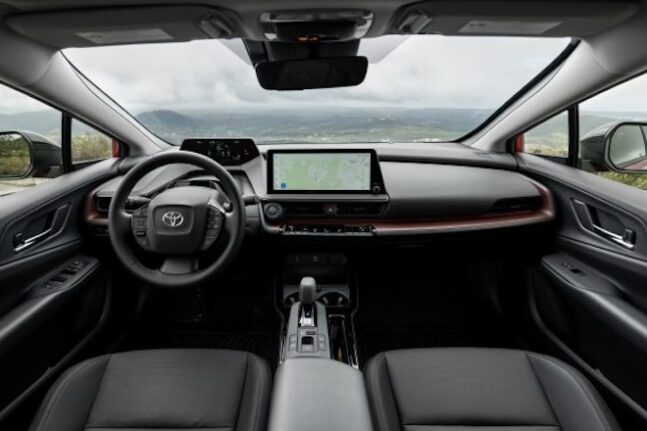
The interior also loses most of its weirdness. Gone are the center screen-only gauges. Sure, an infotainment screen is still there (now landscape oriented instead of portrait, thankfully), but peeking through the top of the steering wheel is a 7″ digital gauge cluster, the same one found inside the Prius Prime’s sibling, the Toyota bZ4X. Although it’s not quite as good as the larger and more conventional version in the Kia Niro PHEV, it’s far better than having all of the instrumentation relegated to the center screen. Also, that cutesy lollipop gearshift knob jutting out of the center stack has been replaced by a Lexus-like version that’s mounted on the center console.
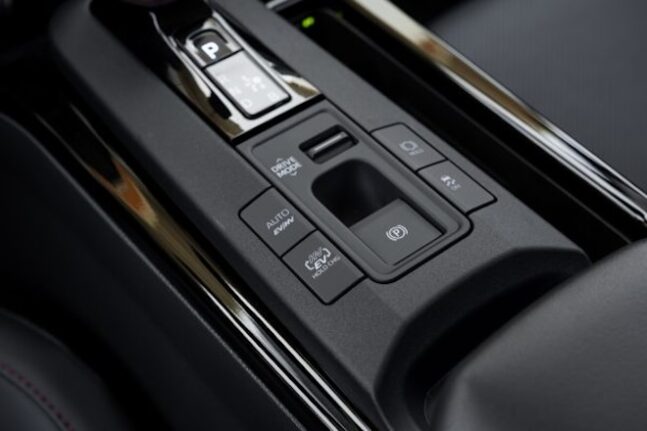
Overall, the interior is more mature and less playful. The thick and rounded-off dash is now linear and handsome. Styling inside is less Fisher-Pricey, and that equates to a Prius that’s easier to use, less kitschy, and definitely grown-up. In terms of overall space, it’s about on par with the old one when it comes to rear legroom, though it loses a bit of rear headroom due to the sleeker greenhouse. If potential PHEV buyers are worried about this, they can always move up to the RAV4 Prime.
The new Prius does so much so well that I might even consider it for myself as a daily commuter. It doesn’t go whole hog EV, and that’s something I can get behind for the sake of convenience and minimal frustration. It also doesn’t make you feel like you’ve totally emasculated yourself when you approach it or when you get behind the wheel. Some may lament its loss of that unique Prius flavor, but I say it was time for a change. The new Prius Prime is excellent in terms of styling, drivability, efficiency, and comfort, and that’s saying something I’ve never been able to say about any other Prius ever.
All photos courtesy of Toyota
Learn More
